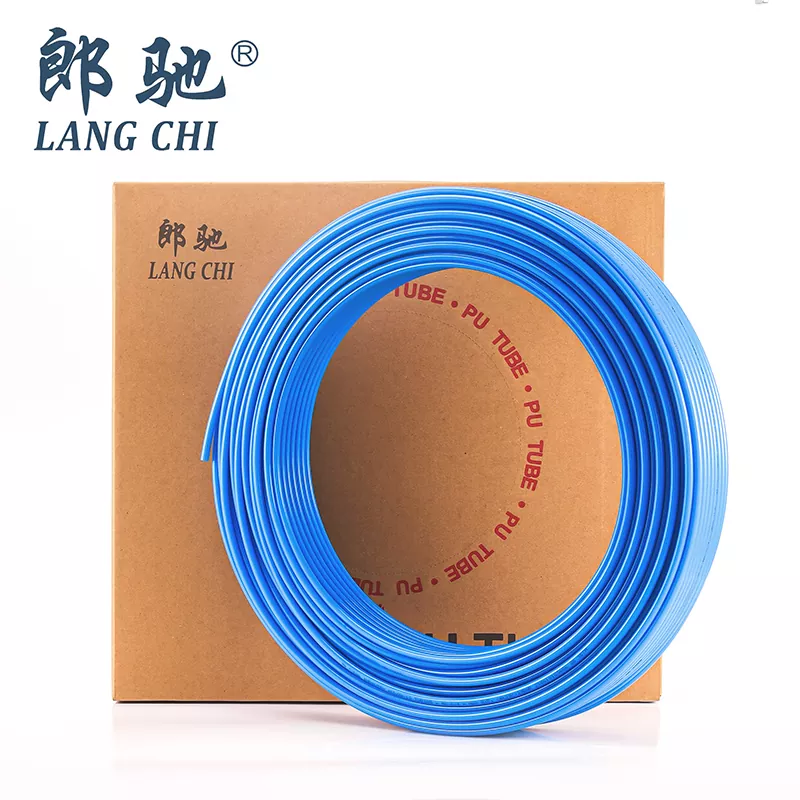
- English
- Español
- Português
- русский
- Français
- 日本語
- Deutsch
- tiếng Việt
- Italiano
- Nederlands
- ภาษาไทย
- Polski
- 한국어
- Svenska
- magyar
- Malay
- বাংলা ভাষার
- Dansk
- Suomi
- हिन्दी
- Pilipino
- Türkçe
- Gaeilge
- العربية
- Indonesia
- Norsk
- تمل
- český
- ελληνικά
- український
- Javanese
- فارسی
- தமிழ்
- తెలుగు
- नेपाली
- Burmese
- български
- ລາວ
- Latine
- Қазақша
- Euskal
- Azərbaycan
- Slovenský jazyk
- Македонски
- Lietuvos
- Eesti Keel
- Română
- Slovenski
- मराठी
- Srpski језик
How to select a good PU Tube
2024-11-11
Polyurethane (PU) tubes are known for their excellent flexibility, durability, and resistance to abrasion, making them a popular choice across a range of applications from pneumatic systems to fuel and oil transfer. But with various types of PU tubing available, selecting the right one for your specific needs can be challenging. Here’s a guide on how to choose a good PU tube for your application, covering the essential factors to consider.
Why Choose PU Tubes?
PU tubes offer a unique balance of flexibility, strength, and resistance to various elements. They are often used in industries like automotive, food and beverage, agriculture, and pneumatics, due to these advantages:
- High Flexibility: Ideal for tight spaces and areas that require repeated bending.
- Durability: Excellent resistance to wear, tearing, and abrasion.
- Temperature Resistance: Performs well in a range of temperatures.
- Chemical Resistance: Resists many oils, fuels, and chemicals.
These characteristics make PU tubing an excellent choice in applications where durability and flexibility are key. Now, let’s look at what to consider when choosing the right PU tube.
1. Understand the Application Requirements
The most crucial step is to understand the specific needs of your application. Each PU tube has different qualities that suit particular tasks, so knowing the purpose helps in selecting the right one.
- Pneumatic Systems: Look for tubes that can handle high pressure and repetitive flexing without kinking.
- Fuel and Oil Transfer: Choose a PU tube with good chemical resistance to ensure it won’t degrade in the presence of hydrocarbons.
- Food and Beverage: Look for food-grade PU tubes that are non-toxic and safe for contact with consumables.
2. Check the Tube’s Flexibility and Hardness (Shore Hardness)
PU tubes come in various hardness levels, typically measured using the Shore A or Shore D scale:
- Soft PU Tubing: These tubes have a lower Shore A rating, which means they are more flexible and can bend easily. They are great for applications that require maneuverability in tight spaces.
- Hard PU Tubing: Higher Shore hardness means the tube is more rigid. These tubes are suited for applications where the tubing must retain its shape or where high pressure is a factor.
Flexibility is especially important in dynamic applications, such as pneumatic tools or robotic systems, where frequent bending is required. If your system has high-pressure requirements, consider a PU tube with greater wall thickness to avoid kinking.
3. Evaluate the Pressure Rating
PU tubes come in different pressure ratings. If your application involves high pressure, make sure to select a tube with an adequate pressure rating to prevent failure. Most manufacturers provide maximum working and burst pressures for each tubing type, so check this information closely.
For pneumatic systems, choose tubing with a safety margin above the operating pressure of your system. Low-pressure applications, like water transfer, can usually work with standard PU tubing without extra reinforcement.
4. Assess the Temperature Resistance
PU tubes are typically suited for a wide temperature range, but it’s essential to ensure the selected tube can handle the extremes of your environment:
- For hot environments or systems with exposure to heat, look for high-temperature-rated PU tubes.
- For cold storage, make sure the PU tubing can withstand low temperatures without cracking or hardening.
Always check the manufacturer’s specifications to ensure the temperature range of the tubing matches your working environment.
5. Look for Chemical Compatibility
PU tubing has excellent resistance to many fuels, oils, and chemicals, but it’s always best to verify compatibility if the tube will be in contact with specific chemicals or fluids. Review the tube’s chemical resistance chart, often provided by the manufacturer, to ensure the tube material won’t degrade or become brittle over time.
Some PU tubes are specifically designed for compatibility with oils and fuels, so selecting a tube with the right chemical resistance will increase the lifespan of the tubing in industrial applications.
6. Consider Abrasion and Wear Resistance
If your PU tube will be exposed to abrasive environments, choose a PU tube with a higher abrasion resistance rating. PU tubing is inherently abrasion-resistant, making it suitable for areas where the tube might rub against surfaces or encounter rough handling. However, for extra durability, look for a tube that is specifically reinforced for abrasion-heavy applications.
7. Determine Color and Transparency
Polyurethane tubing is available in various colors and levels of transparency, which can be beneficial for certain applications:
- Clear Tubing: Useful when you need visibility to monitor the fluid or air flowing through the tube.
- Colored Tubing: Different colors can help identify and differentiate between lines in complex systems, which is helpful in both installation and maintenance.
In some cases, color-coding tubing lines can increase safety and reduce the chance of errors in complex systems.
8. Ensure Compliance with Industry Standards
For food and beverage applications, select food-grade PU tubing that complies with industry safety standards, such as FDA and NSF certifications. Industrial applications, especially those involving hazardous materials, may also require compliance with specific industry standards to ensure safety and reliability.
9. Review Cost and Length Options
PU tubing is generally an affordable option, but prices can vary depending on factors like tubing size, pressure rating, and chemical resistance. Make sure to check for cost-effective options, especially if you require large quantities. Many suppliers offer PU tubes in different lengths, so consider bulk options if it aligns with your needs.

Common Applications of PU Tubes
To better understand where PU tubing shines, here are some popular applications:
- Pneumatic Systems: For air compressors, pneumatic tools, and air lines due to high flexibility and durability.
- Food and Beverage Processing: Food-safe PU tubing transports water, syrup, and other consumable liquids.
- Automotive and Fuel Transfer: PU tubing is used in fuel systems, thanks to its resistance to oils and fuels.
- Medical Equipment: Medical-grade PU tubing is used in fluid transfer and various medical devices.
- Agricultural Systems: PU tubing provides durable irrigation lines for greenhouses and farms.
Final Thoughts
Choosing a good PU tube is all about matching the tubing’s properties to the requirements of your application. By considering factors like flexibility, pressure rating, temperature tolerance, and chemical resistance, you can ensure that the PU tube you select will perform well and last longer in your specific environment.
Whether you need tubing for a pneumatic system, an automotive application, or a food-grade transfer line, polyurethane tubing offers a reliable and versatile solution. With the right PU tube in hand, you can look forward to a smoother, safer, and more efficient workflow.
Welcome to wholesale PU Tube from our company - LANG CHI. Our factory is a PU Tube manufacturer and supplier in China.Welcome to Contact at nblangchi@nb-lc.cn.



